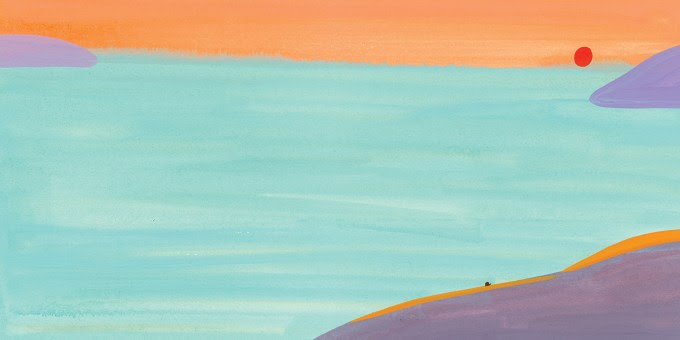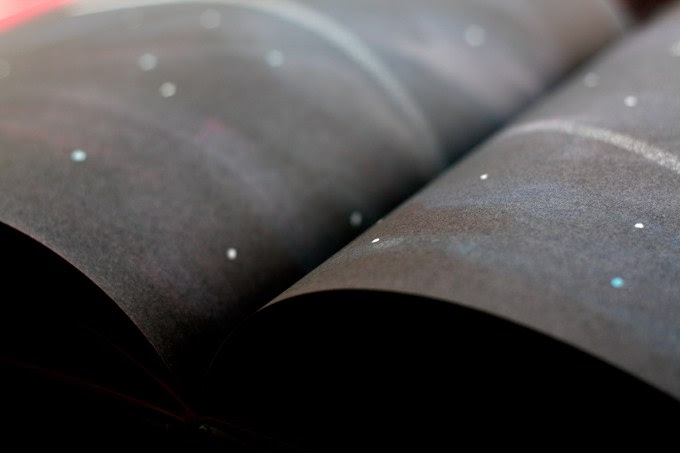"The Snail With The Right Heart: A True Story"
Maria Popova, Brain Pickings
Great children’s books move young hearts, yes, but they also move the great common heart that beats in the chest of humanity by articulating in the language of children, which is the language of simplicity and absolute sincerity, the elemental truths of being: what it means to love, what it means to be mortal, what it means to live with our fragilities and our frissons. As such, children’s books are miniature works of philosophy, works of wonder and wonderment that bypass our ordinary resistances and our cerebral modes of understanding, entering the backdoor of consciousness with their soft, surefooted gait to remind us who and what we are.
This is something I have always believed, and so I have always turned to children’s books — classics like The Little Prince, which I reread once a year every year for basic soul-maintenance, and modern masterpieces like Cry, Heart, But Never Break — as mighty instruments of existential calibration. But I never thought I would write one.
And then I did: The Snail with the Right Heart: A True Story (public library) is a labor of love three years in the making, illustrated by the uncommonly talented and sensitive Ping Zhu, whom I asked for the honor after she staggered me with the painting that became the cover of A Velocity of Being: Letters to a Young Reader.
While the story is inspired by a beloved young human in my own life, who is living with the same rare and wondrous variation of body as the real-life mollusk protagonist, it is a larger story about science and the poetry of existence, about time and chance, genetics and gender, love and death, evolution and infinity — concepts often too abstract for the human mind to fathom, often more accessible to the young imagination; concepts made fathomable in the concrete, finite life of one tiny, unusual creature dwelling in a pile of compost amid an English garden.
At the heart of the story, excerpted below, is an invitation not to mistake difference for defect and to recognize, across the accordion scales of time and space, diversity as nature’s fulcrum of resilience and wellspring of beauty.
Long ago, before half the stars that speckle the sky were born and before the mountains rose reaching for them, a giant ocean covered the Earth. One day, something strange happened in the giant ocean — a change so mysterious and magnificent that it was given a special name: mutation.
From this mutation, life was born from non-life: The first living creatures — tinier than a grain of sand, tinier than the tip of the eyelash of a mouse — came into being.
Time tended to them kindly —
they grew bigger and bigger,
curiouser and curiouser.
Soon — which in cosmic time means millions and millions of years — they crawled out of the ocean and onto the land. Not knowing whether they would find a home there, some of these brave early explorers carried their homes on their backs.
And so snails took to the Earth.
Soon — more millions and millions of years later — humans were walking the Earth alongside them.
One autumn afternoon a cosmic blink ago, a human — a retired scientist from the London’s Natural History Museum — stopped mid-stride on his walk when he noticed a most unusual garden snail in a pile of compost. It was smaller than the other snails. Its shell was darker than theirs. One of its tentacles had trouble unspooling. And because the snail’s tentacles are both its fingers and its eyes, this little snail didn’t feel and see the world the way most snails do.
But the strangest thing was something else still: The spiral of its shell coiled in the opposite direction from other snails — it spiraled left instead of right, the same direction the Earth crawls around the Sun.
The old man picked up the little snail tenderly and marveled at it.
It just so happened (isn’t chance lovely?) that a few days earlier, he had heard on the radio an interview with a snail researcher from an important university. Doctor Angus Davidson was his name. So he decided to send this unusual little snail to Doctor Angus’s laboratory. Maybe its strangeness held some beautiful secret waiting to be unlocked.
Carefully, the elderly scientist packed the little snail into a cozy box and sent it on its way.
When it arrived at the famous snail laboratory, Doctor Angus named it Jeremy, after the English politician Jeremy Corbyn. (Grownups believe that this big round world has sides, so they divide their politics into left and right, like shoes or gloves. Because Jeremy Corbyn belongs to the left, Doctor Angus thought it would be funny to name the little lefty snail after him.)
But although Jeremy the snail was given a boy name, Jeremy the snail was neither a he nor a she — Jeremy, like all land snails, was both.
Jeremy was a they.
One of the wonders of snails is that they can make babies without a mate, because every snail has a body that is both male and female. Such a wondrous body is called a hermaphrodite.
If a hermaphrodite makes babies alone, they are almost exactly like their parent. But when two parents make a baby together, the baby is partly like each of them.
And because diversity is always lovelier than sameness, and because it makes communities stronger and better able to adapt to change, snails prefer to make babies in pairs.
This is how it happens: When a snail finds a partner, the two face each other, gently touching their tentacles together to feel if they like each other. And if they do, they glide their bodies alongside one another in a slow double embrace, until their baby-making parts fit together like puzzle pieces. Then, they gently pierce each other with tiny spears called “love darts,” which contain their genes — the building blocks of bodies.
Genes are like tiny seeds your parents plant in the garden that becomes your body — your special combination of seeds is what makes you you, what makes your body-garden unlike anyone else’s. Genes are how life talks to the future. Your genes decide things like how tall you grow, what color your eyes are, and how your thumbs are shaped.
Many of your gene-seeds come abloom in your own body-garden — you get to see, to be the flowers they become. But not every one of your seeds will bloom — some only sprout when they are near other seeds just like them. These shy seeds may lay dormant in the soil and only bloom in generations of gardens down the line — in your children, or your children’s children, or your children’s children’s children. Those seeds are called recessive genes.
Jeremy was so unusual because in their body, a rare recessive gene came abloom — one of Jeremy’s great-great-grand-parents must have passed this dormant seed on, until it awakened to make Jeremy’s shell coil in the opposite direction.
Jeremy’s shell was just the most obvious expression of that mutation, but the entire soft body hidden inside was also a mirror-image of almost every other snail’s body — a condition known as situs inversus, Latin for “inverted internal organs.”
In his twenty years of working with snails, Doctor Angus had never before seen a lefty. He believes that situs inversus is rarer than one in 10,000, probably one in 100,000, possibly even one in a million.
Some humans, too, have such wondrous mirror-image bodies — it is just as rare in us as it is in snails. If you had situs inversus, your heart would be on the right side — which is the wrong side, because almost everyone’s heart is on the left side.
Jeremy’s heart was also on the right-wrong side, as were all his vital body parts — which meant that Jeremy could only do the double-embrace dance with another snail with situs inversus, or else the puzzle pieces wouldn’t fit together to make baby snails.
Life can be lonesome when your mate is one in a million. And Doctor Angus didn’t want Jeremy to be lonesome. He also knew that if Jeremy had babies with another lefty snail, scientists could study this very rare gene and better understand situs inversus not only in snails, but in humans.
So, he went on the radio again and made an appeal to the whole world to help find Jeremy a lefty mate.
Moved by Jeremy’s story, people far and wide got on their knees amid gardens and grasslands and compost piles, determined to find Jeremy’s inverted puzzle piece. Within weeks, not one but two potential mates were found — one by a young Englishwoman who kept snails as pets, and another by a snail farmer in Spain.
The whole round world rejoiced when Lefty, the English snail, and Tomeu, the Spanish snail, were sent to Doctor Angus’s lab to meet Jeremy.
But…
But — that three-letter twist of fate that can so instantly take the trajectory of any story, any expectation, any life and coil it in the opposite direction.
Before the watercolor sun sets beneath the endpapers, the story ends the same way life lives itself through us — unpredictable, heartbreaking, and redemptive, forever planting dormant seeds to come abloom in some future garden, maybe tomorrow, maybe long after the stars that speckle this sky are gone and new stars are born to shine upon new hearts beating to the same primeval pulse-beat of cosmic chance.
The Snail with the Right Heart, out on February 2, came alive thanks to the invaluable stewardship of my longtime friend, neighbor, and collaborator Claudia Zoe Bedrick — the one-woman powerhouse behind Brooklyn-based independent children’s publisher Enchanted Lion.
I have chosen to donate all my author’s proceeds from the book to the Children’s Heart Foundation, whose quarter-century devotion to funding research and scientific collaborations is shedding light on congenital heart conditions to help young humans with unusual hearts live longer, wider lives.
Special thanks to my biologist pal Joe Hanson for assaying the solidity of the science, to my former partner and darling friend Debbie Millman for hand-lettering the cover text, and to the fine journalists at The Guardian for reporting the true story on which this labor of love is based.
FORWARD TO A FRIEND/READ ONLINE/ |































No comments:
Post a Comment